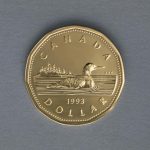 Yesterday’s trade saw USD/CAD within the range of 1.4225-1.4541. The pair closed at 1.4270, plummeting 1.62% on a daily basis. It has been the second consecutive drop and also the sharpest one since March 18th 2015, when the pair fell 1.74%. In addition, the daily low has been the lowest level since January 13th, when a low of 1.4183 was registered.
Yesterday’s trade saw USD/CAD within the range of 1.4225-1.4541. The pair closed at 1.4270, plummeting 1.62% on a daily basis. It has been the second consecutive drop and also the sharpest one since March 18th 2015, when the pair fell 1.74%. In addition, the daily low has been the lowest level since January 13th, when a low of 1.4183 was registered.
At 9:23 GMT today USD/CAD was losing 0.50% for the day to trade at 1.4197. The pair touched a daily low at 1.4195 at 9:15 GMT and a daily high at 1.4301 during the early phase of the Asian trading session. Support may be expected in the area around the low from January 13th (1.4183). A break and close below it may target the low from January 12th (1.4172) and then – the psychological 1.4100 level. Resistance, on the other hand, may be encountered at the hourly 21-period EMA/the current daily high (1.4295/1.4301) and then – at the hourly 200-period EMA (1.4384).
The Canadian dollar has recently been strongly pressured by a continuous decline in prices of crude oil. The commodity has fallen in 14 out of the past 25 trading days. Oil futures for March delivery were up 3.65% on the day to trade at $30.94 per barrel as of 9:40 GMT, after going up as high as $31.03 earlier. On January 20th the commodity touched a low of $26.19 per barrel, or a level unseen since early May 2003. Oil has slumped 16.54% so far during the current month.
On Friday USD/CAD trading may be influenced by the following macroeconomic reports as listed below.
Fundamentals
United States
Manufacturing PMI by Markit – preliminary reading
Manufacturing activity in the United States probably was little changed in January, with the corresponding preliminary Purchasing Managers Index coming in at a reading of 51.1, according to market expectations. If so, this would be the lowest reading since October 2012, when the PMI was reported at 51.0. In December the final seasonally adjusted PMI stood at 51.2, down from a preliminary 51.3.
According to Markits statement: ”…new order levels expanded only fractionally and at the weakest pace since September 2009. Anecdotal evidence cited softer underlying demand conditions, intense competition for new work and subdued business confidence among clients. Export sales were also close to stagnation in December, with manufacturers noting that the strong dollar continued to act as a drag on demand from abroad.”
”Manufacturing production growth moderated in response to weaker than expected new business intakes during December. The latest expansion of output levels was the least marked since October 2013. At the same time, capacity pressures eased in December, with backlogs of work decreasing at the fastest pace since September 2009. Nonetheless, payroll numbers rose at a solid rate that was slightly faster than seen during the previous month. This marked two-and-a-half years of sustained job creation across the manufacturing sector, and the pace of expansion was close to the average seen over this period.”
”Input prices continued to fall during the latest survey period, with the rate of decline accelerating slightly since November. Manufacturers commented on falling costs for a range of raw materials, particularly steel. However, factory gate charges rose for the third month running. Although only modest, the rate of output charge inflation picked up to its fastest since August.”
Values above the key level of 50.0 indicate optimism (expanding activity). In case the flash manufacturing PMI showed a worse-than-anticipated performance, this would have a moderate bearish effect on the US dollar. The preliminary PMI reading by Markit Economics is due out at 14:45 GMT.
Existing Home Sales
The index of existing home sales in the United States probably advanced 8.5% to a level of 5.18 million in December compared to November, according to the median estimate by experts. In November sales were 10.5% lower from a month ago to reach 4.76 million, or the lowest level since April 2014, when a figure of 4.66 million was reported. The introduction of new regulations on paperwork for home purchases was the reason behind the sharp drop in November. Sales of new single-family houses slumped 12.1% during the month, while sales of condos were up 1.7%. The median sales price climbed 0.4% in November.
In case the index rose at a steeper monthly rate than anticipated, this would have a limited-to-moderate bullish effect on the US dollar. The National Association of Realtors (NAR) is to release the official figure at 15:00 GMT.
Canada
Retail sales
Retail sales in Canada probably increased 0.2% in November on a monthly basis, according to the median forecast by experts, following another 0.1% gain in the prior month. Retail sales, excluding sales of automobiles, probably went up 0.4% in November from a month ago, following a flat performance in October. Large-ticket purchases are excluded due to their high volatility, which could influence the general trend. In case core retail sales rose more than anticipated, this would have a moderate bullish effect on the Canadian dollar. Statistics Canada is to release the official report at 13:30 GMT.
Consumer inflation
The annualized consumer inflation in Canada probably accelerated to 1.7% in December, according to market expectations. If so, it would be the highest annual inflation since November 2014. In November annual consumer prices were reported to have risen 1.4%.
In November prices of food rose 3.4% year-on-year, after a 4.1% surge in the previous month. Cost of shelter went up 1.2% in November, accelerating from a 1.1% surge in October. Consumers also paid more for clothing and footwear in November (a 2.1% year-on-year increase, following a 0.8% rise in October). On the other hand, downward pressure on the Consumer Price Index came from cost of transportation, as the latter decreased 1.1% during the period, easing from a 3.2% slump in October, according to the report by the Statistics Canada.
Bank of Canadas (BoC) annualized Core CPI, which excludes prices of fruits, vegetables, gasoline, fuel oil, natural gas, mortgages, intercity transportation, and tobacco products, probably rose 2.0% in December, or matching the annual surge rate in November. In October annual core inflation was reported at 2.1%. This is the key measure of inflation, on which the central bank bases its decisions regarding monetary policy. In case both the general CPI and the core CPI accelerated more than projected in December, this would have a strong bullish impact on the Canadian dollar. The official CPI report by the Statistics Canada is due out at 13:30 GMT.
Daily and Weekly Pivot Levels
By employing the Camarilla calculation method, the daily pivot levels for USD/CAD are presented as follows:
R1 – 1.4299
R2 – 1.4328
R3 (range resistance) – 1.4357
R4 (range breakout) – 1.4444
S1 – 1.4241
S2 – 1.4212
S3 (range support) – 1.4183
S4 (range breakout) – 1.4096
By using the traditional method of calculation, the weekly pivot levels for USD/CAD are presented as follows:
Central Pivot Point – 1.4385
R1 – 1.4709
R2 – 1.4877
R3 – 1.5201
S1 – 1.4217
S2 – 1.3893
S3 – 1.3725





